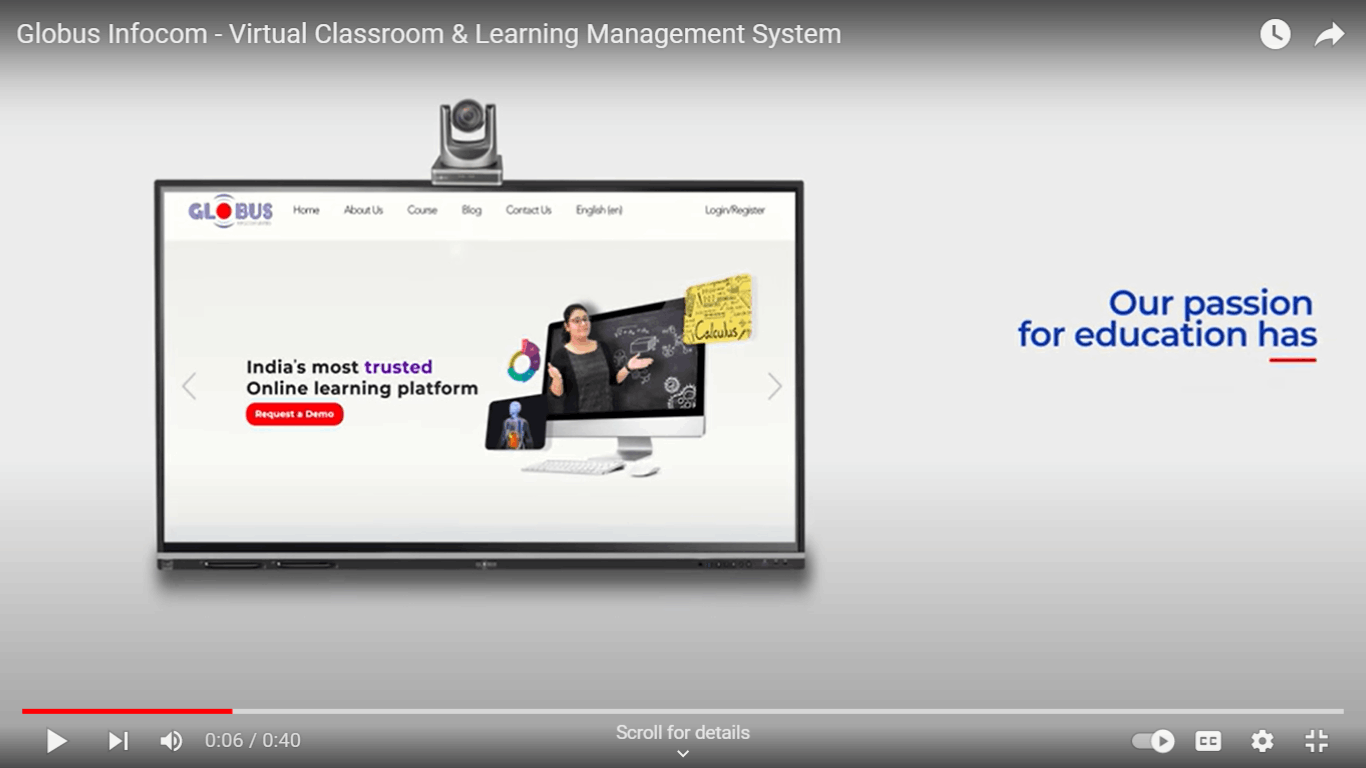Virtual classrooms, the symbol of the rising new Education system worldwide, has become the most accepted teaching model for digital learning in classrooms. Teachers and students as well as institutions have adopted a range of tools and resources which was earlier not accepted by anyone.
Compromising with education has never been an option and learning therefore can be stopped. Although adopting e-learning might be challenging but teachers with their efforts are turning classrooms into digital classrooms by making the most use of virtual classrooms.
What are Virtual Classrooms?
The educational platform with the provision of online learning is a properly organized online classroom that knows no geographical boundary. Conducted from any device, with just a link you can start your classroom fluently. To reach e-learning, teachers do not need to face any trouble with the current manageable instructional design. Teachers and learners can create engaging learning with the learning materials.
How teachers are designing perfect virtual classrooms for their students through their learning experiences can be answered through these two mediums of learning.
Synchronous learning- Defined as learning occurring simultaneously based on real-time learning. It includes active learning by involving groups of students. This could be possible through inbuilt tools of a virtual classroom where a screen sharing option is included. Some of the EdTech solution providers like Globus Infocom Limited allow “Breakout Rooms” where team-works are possible by a diving group of students separately to make them do discussions or assigned projects.
Asynchronous learning- Learning that does not occur simultaneously could be called asynchronous learning. This is the learning where students can complete their tasks at their own learning pace. Through instant feedback to learners, a depth understanding of students is possible.
Virtual Classroom- Strengthening the Online Education Ecosystem in India
The virtual classroom has now become a necessity for the continuation of education during the time of the Covid-19 crisis. The virtual classroom has proven to be a boon in recent crises making it very promising for parents and teachers. There has been a major educational transition in recent times with virtual classrooms LMS.
But the recent crisis has given major challenges for teachers and students with the adoption of tools in the classroom. Several academic institutions faced issues while working with tools leading to disappointing turnouts generating infrastructural issues.
While several EdTech solution providers are innovating with continuous change in specifications there are leading EdTech brands like Globus Infocom Limited which provide training with their solutions to educators for its easy adoption and making tools handy.
By making it an integral part of the education system today, let us see five basic strategies which are strengthening the online education system of India.
- Get the feedback
Track the progress of students through virtual classroom quiz tools. Assess your student for progressive evaluation. Providing students with feedback helps them to get accuracy related to their tasks.
- Record for later
While in any case you are not able to attend the class record it for later reference. The recording option allows students free from fear of losing notes and thus reduces their dependency on other students.
- Curriculum-mapped learning process
In a Virtual classroom setup, multimedia-rich learning resources are designed by expert educators as per the curriculum of schools to motivate students to actively participate in learning. It allows teachers to share multiple types of documents with students and live to annotate them synchronously. Also, links to video files and audio files could be shared amongst students.
- Unique perspective in learning
The new approach to learning has created a class to be very interesting. With the option of a screen, the sharing classroom can be more engaging. Virtual classroom LMS setup has the feature of room chats proving it to be the platform of discussions and doubt clarification. One of the most important points for its acceptance by students in the classroom would be that it has helped introverted students or shy students to be active in the class.
- Connect with previous classes
Virtual classrooms include a playlist library connecting the previous with the present. It allows students to create playlists helping students to keep track of it.
What problems do virtual classrooms try to solve?
1) Alleviate the shortage of teachers
A virtual classroom proves to be an effective solution in scenarios when there is a smaller number of teachers. Preferring online learning many students could be benefitted from this simultaneously.
2) Reducing drop- rates : During the time of crisis, many institutions were closed also that students were forced to leave that schools in between. But thanks to the EdTech solutions providers with the help of which the rise of innovative classroom solutions was adopted ensuring a blended approach to learning.
3) Reaching corners of the World : Distance learning with the help of a virtual classroom LMS allowed classes to be taken from anywhere removing geographical barriers.
4) Low Engagement : Students who were performing poorly in academics were seen improvement with the help of virtual classrooms LMS creating engaging learning.
Way forward
For making online learning successful there must be the implementation of the right tools in the classroom. A digital classroom with smart learning empowers students; therefore, to ensure a smooth transition in the education system there is a need of picking up the right device. In this new era of learning in virtual classrooms, educators with independent practices can work on project-based learning.
Until now opting for virtual classrooms was an option but today it needs class to enhance the academic performances of the students. Therefore, the virtual classroom has now become fundamental in the classes.


2 Item(s)
Pamma Tumma
Alkanath
2 Item(s)